Mission Team
Mission Manager and Project Scientist
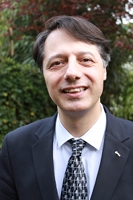 |
Philippe Escoubet Nationality: French European Space Agency |
Philippe was born in the south of France. Although he had a casual interest in stars and planets, it was not until he went to university in Toulouse that he became seriously interested in space exploration. During a course on astrophysics, he spent a few days at the Pic du Midi observatory in the Pyrenees, staring at the wonders of the night sky in sub-zero temperatures. From then on he was hooked!
After a three-month internship at the Centre D'Etudes Spatiale des Rayonnements (now called Institut de Recherche en Astrophysique et Planétologie) in Toulouse (France), he went on to complete a degree in space plasma physics. This was followed by a PhD based on data from the Russian-French Aureol 3 satellite.
The next step was a research fellowship at Goddard Space Flight Center in Maryland, looking at data, from the Dynamic Explorer satellite, on auroras and charged particles in Earth's magnetic field.
His move to ESA’s European Space Research and Technology Centre (ESTEC) in the Netherlands came in 1991. After analysing data from satellites such as the International Sun-Earth Explorer (ISEE-1), he moved to the Cluster project, where he became deputy project scientist. In 1997 he was appointed Cluster project scientist and in 2007 Cluster mission manager.
The day the four Cluster spacecraft were lost during the launch failure of the first Ariane 5 was a day that Philippe will never forget. He was in Paris that day (4 June 1996) at the Louvre, watching the launch of Cluster on the Ariane 5 on a large screen along with more than 1000 people. The loss of the spacecraft was a traumatic experience for the Cluster team, but they bounced back with the idea of putting the instruments on one spacecraft: the 'Phoenix' mission.
There followed a long battle to get the revived mission accepted. Eventually, ESA Member States agreed to build four new Cluster craft. Launch was set for 2000, just in time to study the Sun-Earth interaction at the peak of solar activity.
Since then, Philippe has been closely involved in ensuring that Cluster repaid the efforts of all those who played a role in reviving the mission. During its lifetime, scientists are using Cluster to uncover secrets of the auroras and solar storms; Cluster data are being used to construct a three-dimensional model of the magnetosphere and to probe in detail the processes that take place there; results from Cluster are revolutionising our understanding of how the Sun interacts with the near-Earth environment and are providing new insight into phenomena that occur across the Universe.
Principal Investigator for ASPOC
 |
Klaus Torkar
Nationality: Austrian
Dr. Torkar was born in Graz in Austria. He became fascinated with space research already during his studies at the Technical University Graz, where he developed software to analyse wave propagation data from sounding rockets. In 1975 he obtained an engineering degree from the Technical University Graz and joined Professor Willibald Riedler's group at the Space Research Institute of the Austrian Academy of Sciences as a Research Assistant. He continued to study for his PhD with a doctoral work on the energy budget of the upper atmosphere. He stayed in Professor Riedler's group as a Research Assistant and contributed to establishing ion-chemical models of the lower ionosphere.
While analysing numerous sounding rocket data, he became involved in active experiments with artificial electron beams generated at the payloads to study the interaction of the beam with the ambient plasma and related effects due to charging of the payload. He became fascinated with active experiments, and when Professor Riedler became Principal Investigator for ASPOC, Dr. Torkar joined the team as Co-Investigator and Technical Manager for the instrument. After Professor Riedler's retirement he took over the role of PI. "The team spirit in the Cluster community is an exciting experience. The experiment ASPOC modifies the electric potential of the spacecraft and thereby helps to improve the data of several other instruments. We cannot sit alone in our offices and pursue our studies. We continuously have to talk to each other to find the optimum operational strategy and to get the best results from this mission."
Dr. Torkar was involved in other European space missions: as Lead Investigator of the Spacecraft Potential Control Instrument on the Equator-S mission and as Co-Investigator for the Spacecraft Potential Control Instrument on the Interball Auroral spacecraft. The close relationship between spacecraft potential control and plasma electron measurements is the reason for being Co-Investigator of the PEACE experiment. Dr. Torkar is also Deputy Principal Investigator of the Micro-Imaging Dust Analysis System for the cometary mission Rosetta. Dr. Torkar is married to his wife Marianne. His hobbies include hiking and skiing in the Austrian mountains.
Principal Investigator for CIS
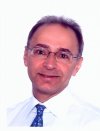 |
Iannis Dandouras
Nationality: French and Hellenic
Dr. Dandouras was born in Athens, Greece. A graduate in Physics from the University of Athens, he then prepared his PhD in Space Physics at the University of Toulouse, France. Using dual-spacecraft (ISEE-1 and 2) data analysis techniques, and with Professor Henri Rème as thesis advisor, he studied the dynamics of the plasma sheet in the Earth's magnetotail, a key region for the triggering of magnetospheric substorms. These are events during which a large part of the energy transferred from the solar wind is dissipated in the Earth's magnetosphere and ionosphere.
He then spent several months at the University of California, Berkeley, and at the University of Washington, Seattle, collaborating with these institutes that where involved in the ISEE-1 and 2 space project, and that later became co-investigator institutes for the CIS experiment onboard Cluster.
Back to Toulouse, he has since been research physicist at CNRS (Centre National de la Recherche Scientifique), at the CESR laboratory (Centre d'Etude Spatiale des Rayonnements).
His research interests include solar wind-magnetosphere coupling, terrestrial magnetosphere dynamics, and in particular the dynamics of the inner magnetosphere: the area where multiple particle populations coexist and interact (plasmasphere, ring current, exosphere). But the inner magnetosphere is also a critical region for space and human activities, since telecommunication and navigation satellites have their orbits in this region of the magnetosphere, where severe space weather phenomena can develop, and whose underlying physical mechanisms are not well understood.
Iannis Dandouras has been involved in Cluster from the time when the project was under preparation, in the early 90s, working with the PI (principal investigator) of the very successful CIS experiment, Professor Henri Rème. In 2005 Professor Rème offered him the role of PI, and this was an exciting new challenge, since the CIS team is a large international consortium, involving institutes from both sides of the Atlantic and about 60 co-investigators.
Iannis Dandouras' research interests include also the dynamics of the magnetospheres of the outer planets, and in particular Saturn's magnetosphere and its interaction with Titan, this moon with a very dense atmosphere, resembling the pre-biotic atmosphere of Earth. He is involved as co-investigator in the MIMI experiment onboard the Cassini mission to Saturn, in the IMPACT experiment onboard the STEREO two-spacecraft solar study mission, and in the SERENA experiment which is under preparation for the BepiColombo mission to Mercury. Back to Earth, he is Deputy PI of the HIA experiment onboard the Double Star mission, which is the fruit of cooperation between the Chinese National Space Administration and ESA.
Principal Investigator of the Digital Wave Processing (DWP) experiment
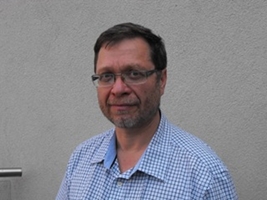 |
Michael Balikhin Nationality: British Space Systems Laboratory, Department of Automatic Control and Systems Engineering, University of Sheffield, United Kingdom |
Michael Balikhin was born in Moscow, USSR, and educated at the Moscow Institute of Physical Engineering State University. In 1984, he joined the Institute of Space Research of the Russian Academy of Sciences (IKI) where, 5 years later, he completed his PhD. The topic of his thesis was the dynamics of electrons and plasma waves at the front of collisionless shocks.
At IKI, Michael was involved at Co-I level in the plasma wave APV-N instrument and the dust detector onboard the VEGA mission, and the wave complex onboard INTERSHOCK. After he left the USSR, Michael continued to be involved in a few Russian projects such as INTERBALL, Mars 96 and the Ukrainian Variant mission.
In 1995, Michael joined the University of Sheffield, United Kingdom, to work on data from the AMPTE (Active Magnetosphere Particle Tracer Experiment) satellite and on Cluster. He became PI of the Cluster DWP instrument in 2011 and is also Co-I on the magnetometer on Venus Express.
Michael is Head of the Space Systems Laboratory in the Department of Automatic Control and Systems Engineering at Sheffield. His main scientific interests include physics of collisionless shocks, nonlinear systems, plasma waves and instabilities, and space weather.
Principal Investigator for EDI
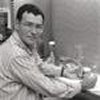 |
Roy B. Torbert
Department of Physics, University of New Hampshire
Nationality: American
Principal Investigator for EFW
 |
Mats André
Swedish Institute of Space Physics (Institutet för rymdfysik, IRF), Uppsala
Nationality: Swedish
Mats André grew up in the north of Sweden. He studied mathematics and physics at Umeå University, and also at University of Sussex in the United Kingdom. He completed a PhD at Umeå University in 1985 with a thesis on plasma theory and a comparison with satellite data concerning plasma wave generation and wave-particle interactions.
Mats spent the next few years analysing data from the Swedish spacecraft Viking (launched in 1986) and Freja (launched in 1992). One major goal was to understand the plasma physics responsible for the outflow of the upper atmosphere and ionosphere into interplanetary space. It turns out that various plasma waves can energise ions that originate in the atmosphere to speeds exceeding escape velocity. Although still based in Umeå, Mats conducted part of this work during extended stays at the space centre at the Massachusetts Institute of Technology in the USA.
In 2000, Mats moved to Uppsala to become a professor at the Swedish Institute of Space Physics. Following the launch of the two pairs of Cluster spacecraft during the summer of 2000, he was also awarded the role of Principal Investigator of the Electric Field and Wave (EFW) instruments on these satellites. "Studying theoretical plasma physics as an undergraduate, I never even considered the possibility of having the main responsibility for instruments in space. Now having had this opportunity for several years, it turns out to be an extremely interesting and rewarding job."
Led by Mats André, the team in Uppsala conducts a range of studies including work on plasma microphysics. Here "micro" may mean layers hundreds of kilometres wide (about an ion gyro-radius), but this is still very small compared to typical distances in the magnetosphere of around one hundred thousand kilometres. One of the main processes investigated is magnetic reconnection. This is a process whereby microscopic plasma processes cause macroscopic changes in magnetic topology so that initially separated plasma regions become magnetically connected. At the boundary between two colliding magnetized plasmas, magnetic field energy is converted to kinetic energy of charged particles. "One of our main interests is in space plasma microphysics. We emphasize processes observable within our Solar System, that are also operational in astrophysical plasmas, and in laboratory and fusion devices."
Mats was a reasonably good middle distance runner at local level in the north of Sweden. He still enjoys sports as a participant and a spectator. He exercises to keep fit, and watches track and field, football and ice hockey. He also enjoys reading, including crime stories of Swedish and foreign authors.
Principal Investigator for FGM
 |
Chris Carr
Space Physics and Atmospheric Group, Blackett Laboratory, Imperial College, London, United Kingdom
Nationality: British
Chris Carr is a Senior Research Lecturer in the Space and Atmospheric Physics Group at Imperial College London. He is the head of the group's Space Magnetometer Laboratory.
Chris joined Imperial College in 1990 to work on the development of the Cluster Fluxgate Magnetometer (FGM) instrument under the direction of Andre Balogh, the first Principal Investigator (PI) for FGM. After the unsuccessful launch attempt in 1996, Chris became the Technical Manager for FGM for the re-design and rebuild of the instruments which culminated in the second, highly successful launch in 2000. Following Andre Balogh and Elizabeth Lucek (both active Co-investigators), Chris is now the third PI for the FGM instruments. He was also the PI for the Double Star magnetometer instrument; he is a PI within the Plasma Consortium on the Rosetta mission and is deputy-PI for the magnetometer on the BepiColombo Mercury Planetary Orbiter.
Chris teaches physics at Imperial and gives a lecture course on instrumentation to undergraduate and postgraduate students. When not working, Chris enjoys outdoor activities and is currently walking (in stages!) the 250-mile (400 km) Cornish coastal path in the south-west of England. He is married and lives in London.
Principal Investigator for PEACE
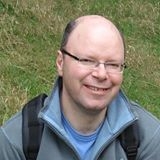 |
Andrew Fazakerley Nationality: British Mullard Space Science Laboratory, United Kingdom |
Andrew Fazakerley is a Professor in the Space Plasma Physics Group at University College London's Mullard Space Science Laboratory (MSSL).
Andrew obtained his Bachelor's degree and PhD at Imperial College London. The subject of the PhD thesis was plasma transport in the magnetosphere of Jupiter. After 2 years postdoctoral work at Imperial College, using dual-spacecraft data analysis techniques on ISEE-1 and -2 data to study waves in the Earth's magnetosheath, he was awarded a PPARC Postdoctoral Research Fellowship to work at MSSL studying upstream waves and particles with dual-spacecraft AMPTE-UKS and –IRM data. He joined the academic staff as a lecturer in 1994.
Andrew's direct association with Cluster began in 1994 when the PEACE instrument PI, Alan Johnstone, nominated him as Deputy-PI, and he became involved in activities such as science planning, providing science inputs to the design of PEACE data products, producing the User Manual and making the case for a Cluster Archive. Following the failed launch of Cluster-I in 1996, and the success of the campaign to resurrect the mission as Cluster II, Professor Johnstone transferred the PI role to Andrew.
The opportunity to participate in the China-ESA Double Star mission arose during this period, and the early years of Cluster where characterised by overlapping of Cluster science and operations activities with the production of two single sensor PEACE instruments from one Cluster II spare and a Cluster I spare DPU, while making changes to comply with ITAR regulations. The two spacecraft Double Star mission saw operations from 2004-2008, producing data that was highly complementary to Cluster data.
Andrew's scientific interests include magnetotail dynamics, magnetic reconnection, linking solar wind features to their solar origin and auroral acceleration processes.
Andrew is married with two young children, which has temporarily reduced his participation in rock climbing, mountaineering and mountain marathons.
Principal Investigator for Research with Adaptive Particle Imaging Detectors (RAPID)
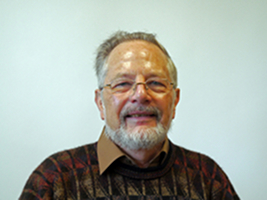 |
Patrick Daly Nationality: Canadian
|
Patrick Daly was born in Toronto, Canada, and grew up in a suburb of Montreal, later moving on to other parts of Canada and Europe.
He obtained his Bachelor's degree in 1968 from Bishop's University (Lennoxville, Quebec) and his PhD in 1973 from the University of British Columbia, Vancouver, after which he spent two years as a Post-Doc at the Clarendon Laboratory, Oxford, United Kingdom. The subject of his PhD thesis and the work in Oxford was nuclear orientation at low temperatures.
Patrick then returned to Canada where he took up a 3-year Fellowship at the Herzberg Institute for Astrophysics with the National Research Council in Ottawa, where he was introduced to the subject of space plasma research. His first assignment sent him to the Arctic Circle to participate on a campaign to launch a rocket into the magnetospheric cusp.
In 1978, Patrick arrived at the Max-Planck-Institute for Aeronomy (now the Max Planck Institute for Solar System Research, MPS), Katlenburg-Lindau, Germany, for a 3-year visit as a research Stipendiat, investigating magnetospheric energetic particle data from the ISEE-1 and -2 satellites. Following that, he went to ESA’s Space Science Department at ESA’s European Space Research and Technology Centre (ESTEC) for 2 years, evaluating energetic particle data from the ISEE-3 satellite during its passages through the geomagnetic tail.
Patrick returned to the MPS in 1984 as a scientific staff member. After working on energetic particle data from the Giotto mission to Comet Halley, he became a Co-Investigator for the LASCO coronagraph on board SOHO, as well as for the CIS and RAPID experiments on Cluster. He was instrumental in establishing the Cluster Science Data System (CSDS).
After the retirement of Berend Wilken, Patrick took over the role of PI of the RAPID instrument just as the operations phase of Cluster started in 2001.
In July 2012, he officially retired, but agreed to continue part-time leading his group in Lindau.
Patrick lives in the university town of Göttingen where he feels very much at home with his German wife. He is a devoted scuba diver, making annual trips to Egypt to explore the Red Sea from below, and to capture (digitally) as many fish and corals as he can while they are still lively and colourful. He is co-author of A Guide to LaTeX, a standard manual for this classical text processing system.
Principal Investigator for STAFF
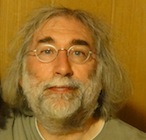 |
Patrick Canu
Laboratoire de Physique des Plasmas, CNRS/Ecole Polytechnique /UPMC, Plaiseau, France
Nationality: French
Patrick Canu was born in Mondeville, France, in 1955. He is a child of the Apollo era, being fascinated by the first manned mission to the Moon. His early interest in space exploration was rapidly extended to the entire field of astrophysics. He got a Master in Physics degree at the Université Pierre et Marie Curie (UPMC). His first experience in space plasma physics missions was in 1979, when he got a student job at CRPE (Centre de Recherches en Physique de l'Environnement) at Issy-les-Moulineaux. He joined the Wave Plasma Group headed by Roger Gendrin, where he helped process and classify the wave data collected by the ESA GEOS-1&2 spacecraft, under the supervision of Nicole Cornilleau. He completed his doctoral thesis in 1982, in the same team, focusing on the interpretation of GEOS observations of resonances triggered by relaxation sounders and the strong electrostatic emissions close to the electron plasma frequency observed in geostationary orbit. This provided him a good background in electron Bernstein modes. He then spent one year as an ESA Fellow, at the Danish Space Research Institute in Denmark where he analysed data coming from the GEOS medium energy electron detector.
Patrick returned to CRPE in 1984 with a permanent staff position at the Centre National de la Recherche Scientifique (CNRS), to work on the ESA Ulysses spacecraft that was due to be launched soon after. The loss of the NASA Space Shuttle Challenger, which would have launched the probe, delayed the launch by four years. This period of time was used to study in detail the electron plasma waves observed by the ISEE-1 spacecraft in the electron foreshock upstream of the Earth's bow shock, and beam plasma instability.
This was also the period when the team, led by Alain Roux, was deeply involved in the proposal of the Cluster mission to ESA. Beginning in 1985, Patrick Canu used his experience in relaxation sounders, gained from GEOS and ISEE, to help develop the science rationale and the characteristics of the instrument that was later selected as WHISPER, with Pierrette Décréau as Principal Investigator.
From 1987-1992 was a particularly busy time for Patrick, since he was involved in the definition of the WHISPER and Cassini-RPWS relaxation sounder, and in the first contact with the Jupiter's magnetosphere through the analysis of the Ulysses observations collected during the flyby.
Since the successful launch of Cluster in 2000 he has been involved with the WHISPER team, as a Co-Investigator, in various studies on the origin and mechanism of electrostatic and remote electromagnetic emissions. Since 2004, this has extended to the exploration of Saturn's magnetosphere from a wave point of view. In 2006, he succeeded Nicole Cornilleau as the head of the Plasma Wave Group of the Centre d'Etude Des Environnements Terrestre et Planetaires (CETP), and helped to create, in 2009, the LPP (Laboratoire de Physique des Plasmas) where he is head of the Space Plasma group. In 2010, Nicole suggested that he take her position as Principal Investigator of Cluster-STAFF.
Patrick is married to Michelle; they have two children and his family all support - and endure - his passion for space exploration.
Principal Investigator for WBD
 |
Jolene Pickett
Department of Physics and Astronomy, University of Iowa, Iowa City, Iowa
Nationality: American
Ms. Pickett was born in the USA in 1951. She became interested in space travel and research at an early age as a result of watching the flashing carrier rocket associated with the first artificial satellite, Sputnik, fly over her small piece of the world in the fall of 1957, issuing in the dawn of the space age. Not long after that she began to check out and avidly read every book on rocketry that could be had in her small town library. She went on to study at the University of Iowa, home of the space research pioneer James Van Allen, receiving a degree in Physics and Astronomy in 1982. She immediately began carrying out research with Dr. Stan Shawhan and Dr. Nicola D'Angelo of The University of Iowa using data obtained from an Iowa-built satellite, the Plasma Diagnostics Package (PDP) which was flown on two early Space Shuttle missions and which made measurements while sitting in the payload bay, being manoeuvred on Canadian robotic arm, and free-flying around the orbiter. The primary research she undertook with the PDP data was the study of the effects of orbiter chemical releases (water dumps, thruster firings, engine burns) on the plasma and neutral environment of the shuttle, in addition to the variations in density and DC potential observed primarily in the wake and ram directions of the Shuttle Orbiter.
From March 1987 through November 1994, Ms. Pickett was the Principal Investigator of the Neutral Pressure Measurements experiment on the Space Power Experiments Aboard Rockets (SPEAR) program. Using data from a series of three SPEAR rocket flights, Ms. Pickett investigated the effects of neutral gas releases, payload outgassing and high voltage discharges in space as related to ongoing power and grounding experiments.
In 1995 Ms. Pickett became the Science Data Manager for the Polar Plasma Wave Investigation, working under the Principal Investigator, Dr. Donald Gurnett, bringing her under the umbrella of the International Solar Terrestrial Physics (ISTP) program. ISTP is largely considered to have come to fruition in the U.S. through the untiring efforts of Dr. Stan Shawhan, who left Iowa in late 1983 to spearhead NASA's effort in this international program which consisted of coordinating solar-terrestrial research in a synergistic manner, taking advantage of the unique resources and already planned space missions by the United States, Europe and Japan. At the time Ms. Pickett felt "it was an immense privilege to be able to carry out research with data from one of the ISTP satellites since Dr. Shawhan, with whom she had begun her research career, is largely considered to be the father of ISTP in the U.S. Without his unceasing efforts, often wrought with frustration due to various political issues and barriers, ISTP might never have been realized as early as it did. Unfortunately, we lost Dr. Shawhan in 1990 at the age of 49, but we are still carrying on the work for which he fought so hard and won". Ms. Pickett began her primary research on nonlinear electrostatic solitary waves and their role in boundary layer processes using the high time resolution Polar PWI waveform data.
In 1999, an opportunity arose for Ms. Pickett to work on the Cluster Wideband Data (WBD) plasma wave experiment, taking on the role of Science and Operations Manager under the direction of the Principal Investigator, Dr. Donald Gurnett. Being able to remain in the ISTP program working on one of the premier ESA missions would prove to be extremely rewarding for Ms. Pickett due to the interaction with the wider international community, particularly in Europe. NASA named Ms. Pickett a Cluster WBD Co-Investigator in 2001, and she continued to carry on her solitary wave research with the WBD data. The Cluster orbit was ideal for carrying out this research due to the many boundary layers and turbulent regions which are crossed. In addition, the challenge of investigating solitary waves through analysis of multi-spacecraft Cluster WBD data has been a very rewarding challenge. In early 2006, Dr. Gurnett asked her if she would like to take over as Principal Investigator on WBD. Ms. Pickett was "most honoured to accept this immense responsibility" and NASA officially named her Cluster WBD Principal Investigator in May 2006.
When Ms. Pickett is not hard at work on Cluster, she is usually reading or off hiking and enjoying the beauty of nature with her husband, Rich Huff. As Program Manager for both the first and second suites of Cluster WBD instruments, Rich unselfishly devoted a large part of his life to ensuring that the WBD instruments were properly designed, built, tested, integrated and commissioned. Without his efforts, the Cluster WBD research program thus far would not have had the success it currently enjoys.
Principal Investigator of the Waves of High frequency and Sounder for Probing of Electron density by Relaxation experiment (WHISPER)
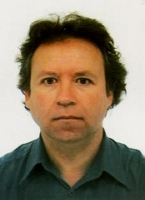 |
Jean Louis Rauch Nationality: French Laboratoire de Physique et Chimie de l'Environnement et de l'Espace (LPC2E) and Centre National de la Recherche Scientifique (CNRS), France |
Jean Louis Rauch was born in Crosnes, France, on 3 November 1954. After receiving his PhD in Plasma Physics at the Université Pierre et Marie Curie, Paris, in 1981, he studied ultra-low frequency (ULF) wave propagation and wave-particle interaction at the Centre de Recherché en Physique de l’Environnement Terrestre et Planétaire, (CRPE) in Issy les Moulineaux.
From 1982 to 1983, he continued his research in the field of plasma physics at the Laboratoire de Physique des Gaz et des Plasmas at the Université Paris-Sud, Orsay. His involvement in space physics began in 1983, when he joined the Laboratoire de Physique et Chimie de l’Environnement et de l’Espace (LPC2E) in Orléans. Jean Louis has a permanent position as space plasma scientist at the Centre National de la Recherche Scientifique (CNRS).
Since 1986, Jean Louis's principal research interests are in the field of wave propagation and wave-particle interactions in the Earth’s ionosphere and magnetosphere. He has participated as PI and Co-I in several space projects: GEOS I and II, ARCARD-3, INTERBALL I and II and TARANIS on the high frequency (HF) wave experiments. He is involved in ESA's JUICE mission to Jupiter as Lead Co-I of the RPWI consortium, through the MIME instrument which is dedicated to the measurement of electron density using the mutual impedance technique.
In September 2012, he became PI of the WHISPER experiment on Cluster, taking over from Jean Gabriel Trotignon. Jean Louis is a member of the International Union of Radio Science (URSI).
Jean Louis is married to Najate; they have two children. He enjoys walking in the forest and appreciates the Breton coast.
